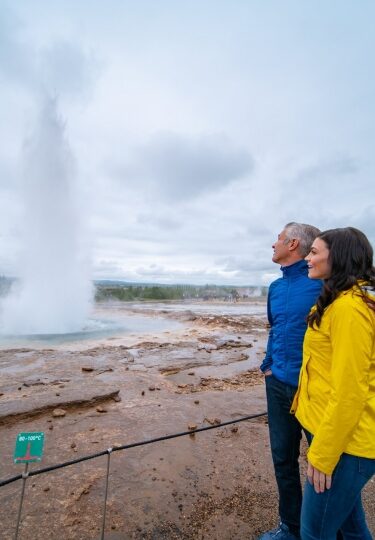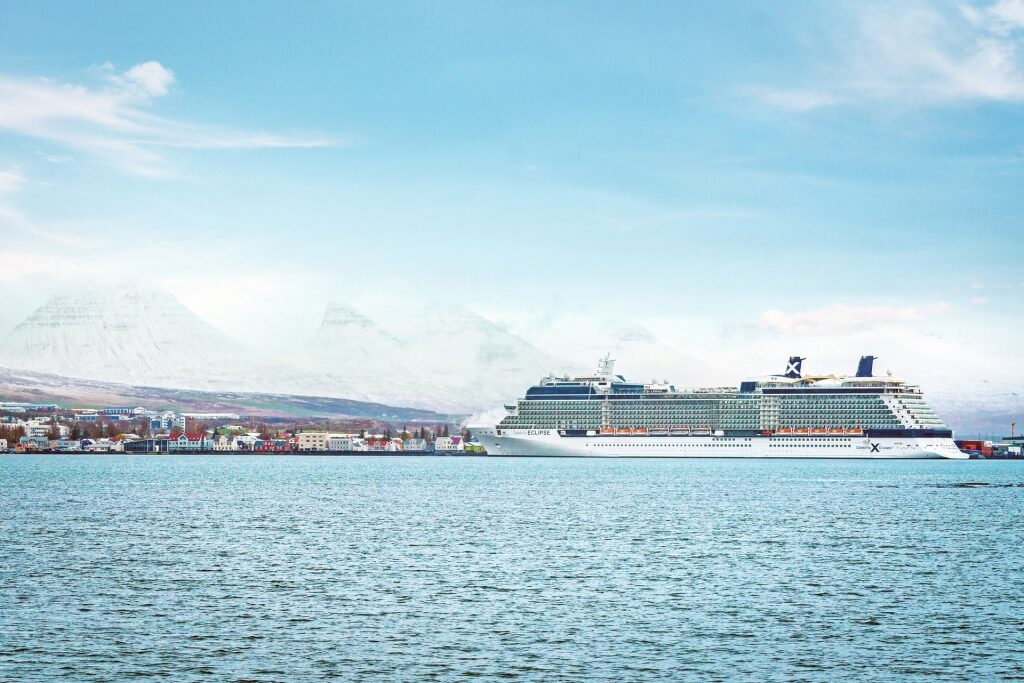Countless waterfalls, beautiful black sand beaches, volcanoes, soaring mountains, and geothermal hot spots make up Iceland’s natural landscapes. Seemingly every wonder exists in this incredible country aptly known as the ‘Land of Fire and Ice.’
Impossible beauty rests around every corner of this diverse island. Prepare to be sprayed by powerful waterfalls, gawk at glaciers, and marvel at deeply carved fjords—Iceland is Mother Nature at her very best.
These are some of the most breathtaking natural wonders in Iceland you can visit.
Gullfoss
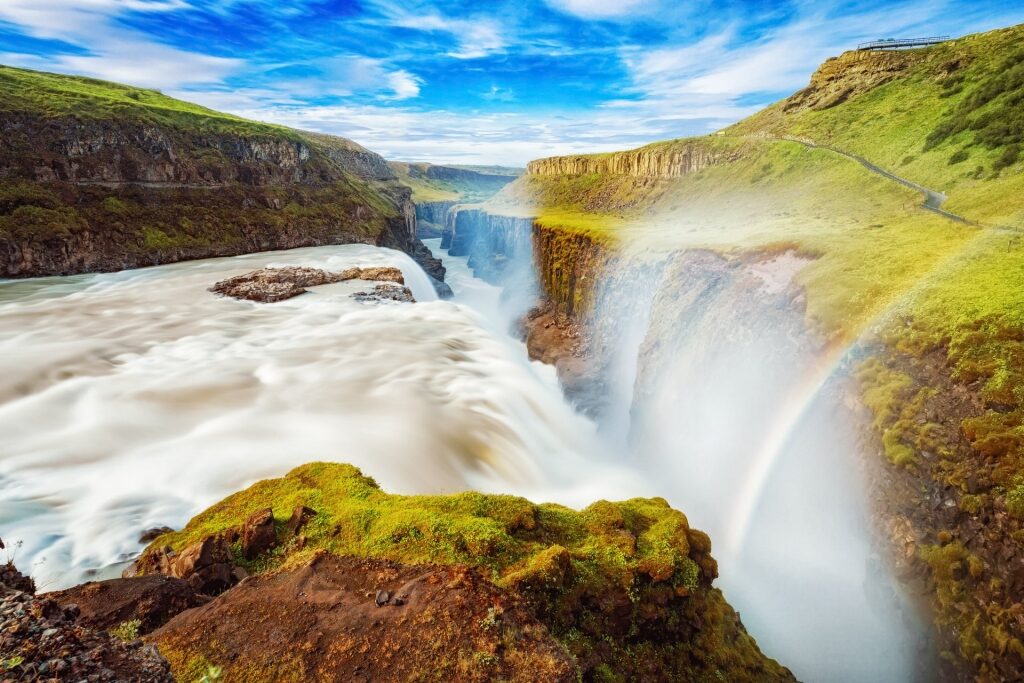
Gullfoss
“Foss” in Icelandic means waterfall, and with so many enchanting falls all over the country, it’s important to keep an eye out for road signs indicating one nearby. Perhaps one of Iceland’s most famed waterfalls, Gullfoss, is located about an hour and a half from the capital city of Reykjavik.
The name means “golden falls,” and as one of the main stops within the well-known Golden Circle, it’s easily accessible. The dramatic thundering falls flow via two cascades into the deep Gullfossgjúfur canyon, putting on quite the Iceland nature show. If the conditions are just right, and you wish hard enough, you might even be granted the appearance of a rainbow.
Eyjafjörður Fjord
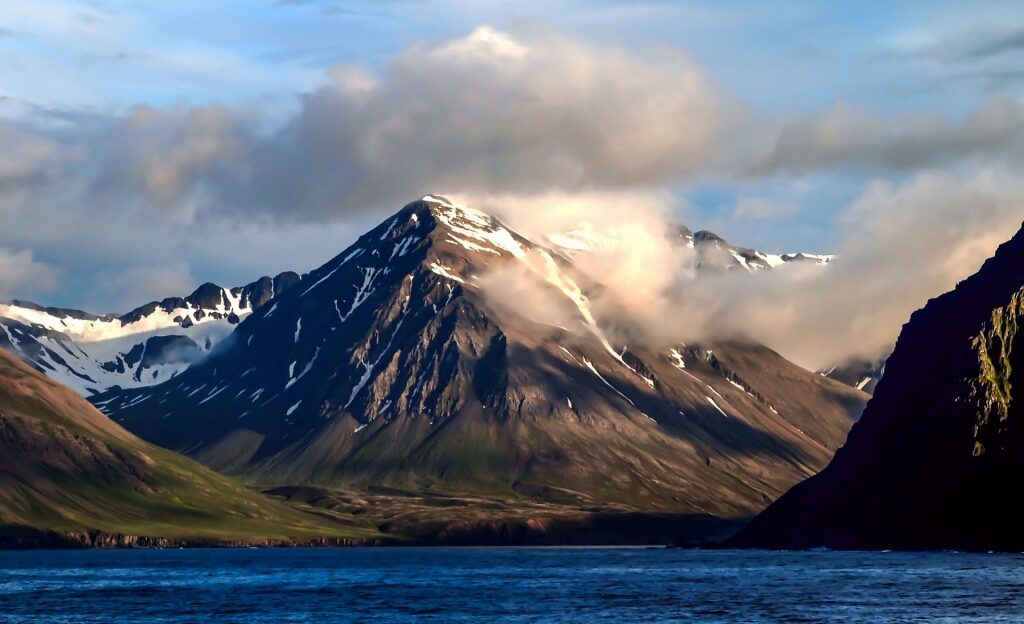
Eyjafjörður Fjord
Northern Iceland is home to the city of Akureyri, referred to as the “capital of the north” and a huge whale-watching destination. The city is situated at the base of the Eyjafjörður, one of the best fjords in Iceland.
Exploring the scenic fjord region exposes you to some of the best mountains in Iceland for hiking and biking adventures, fishing, and whale-watching excursions with quaint fishing villages in between. Godafoss (‘Waterfall of the Gods’) is nearby as well if you’re looking to venture a bit further east of Akureyri to marvel at its natural beauty.
Iceland in the summer brings opportunities for roaming the land on foot late into the evening, lit by the midnight sun via the myriad of hiking trails. Since the fjord is a less-traveled destination in north Iceland, you’ll get to experience pristine, untouched landscapes.
Thingvellir National Park
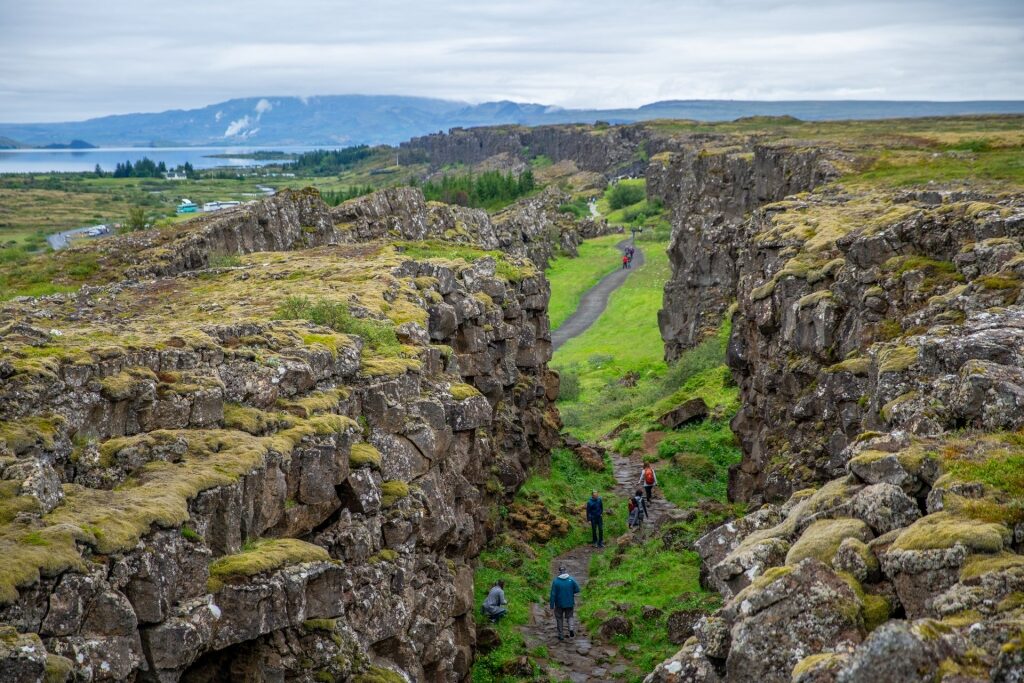
Thingvellir National Park
Iceland’s first national park and historical site where the Icelandic Parliament used to meet, Thingvellir is located approximately 45 minutes from Reykjavik. As one of the most beautiful places in Iceland, the park is a highlight along the infamous Golden Circle route.
Ancient ruins can be found amongst this UNESCO World Heritage Site, but perhaps the most fascinating feature is the position of the park itself and the ability to see the continental drift. Thingvellir is perched upon two tectonic plates (North America and Eurasia) and split with a canyon. This beautiful gorge is filled with water and a very popular destination for the unique experience it offers, like snorkeling or diving between two continents.
Blue Lagoon
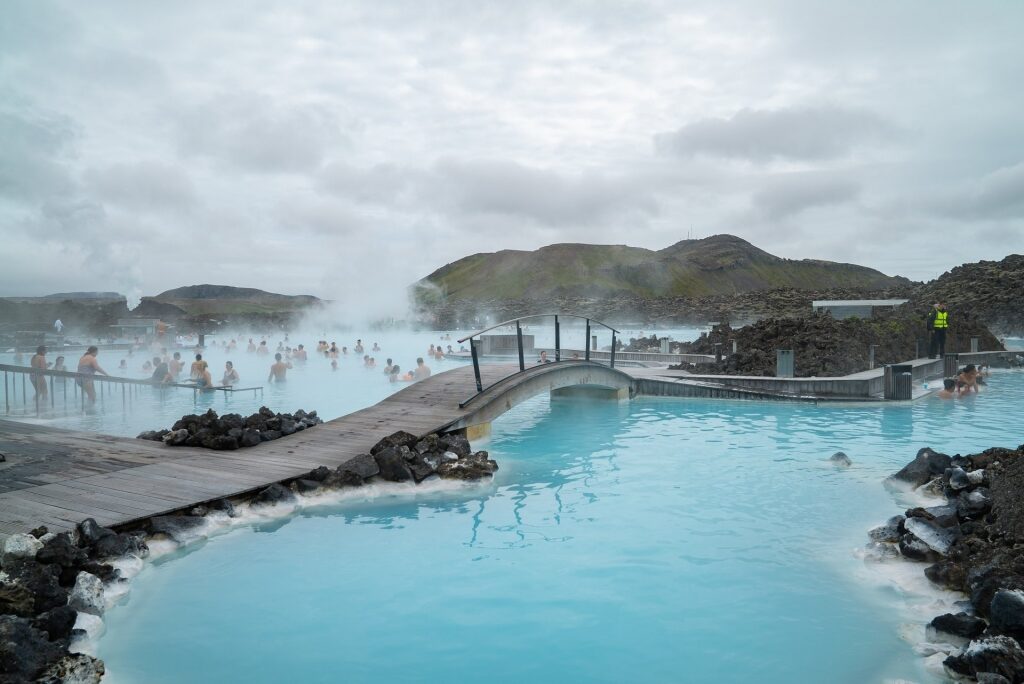
Blue Lagoon
Southern Iceland’s most famed natural attraction, the Blue Lagoon is situated on the Reykjanes Peninsula and puts that mystical geothermal activity to good use. Indulging in this natural spa treatment will have you feeling like relaxed royalty.
As if the light blue coloring of the water wasn’t appealing enough, the refreshing and skin-healing properties of the mineral-rich lagoon take the cake. After a day exposed to Iceland’s ever-changing and sometimes harsh weather, a dip in the warm, soothing waters of the Blue Lagoon is just what the Viking doctor ordered.
With soaking in the numerous pools and hot springs throughout Iceland being a big part of the culture, you’ll be checking one of the most iconic dips off your list with the Blue Lagoon.
Read: Incredible Hot Springs in Iceland
Barnafoss
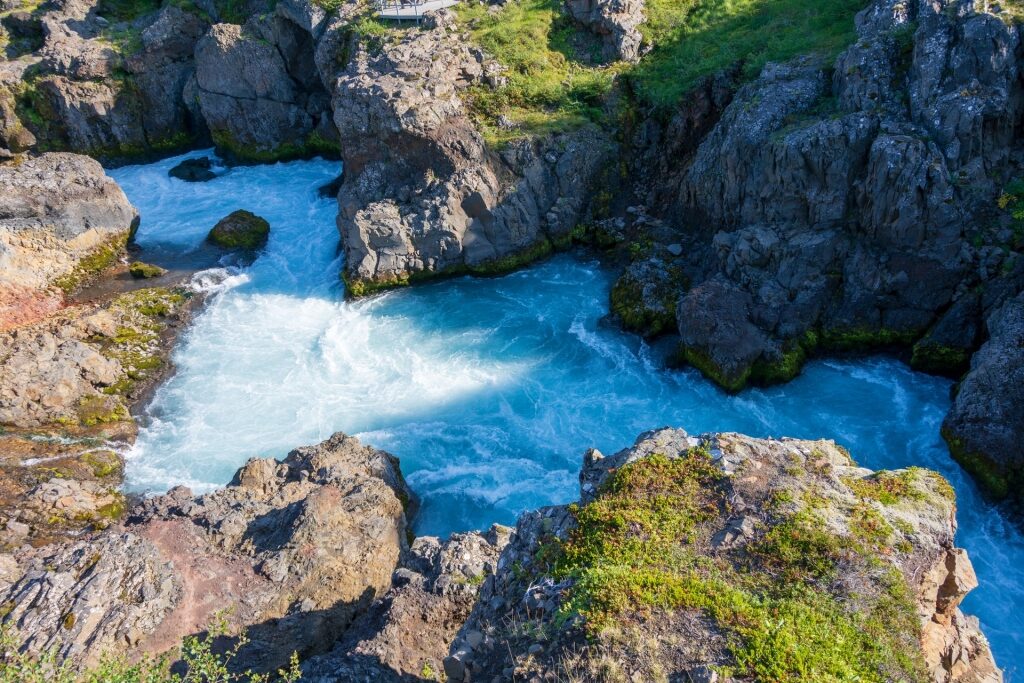
Barnafoss
This waterfall in the western part of the country, about an hour and a half from Reykjavik, is a beautiful example of Iceland’s nature. The waters of Barnafoss wind over lava rock, flowing from the Hvita River in the form of several smaller falls, adding to the distinctive character.
The contrasting vibrant blue water paired with the dark rocks make for an exquisite scene. Easily accessible from the parking area, there are viewing platforms available to comfortably take in the scenery.
Hraunfossar
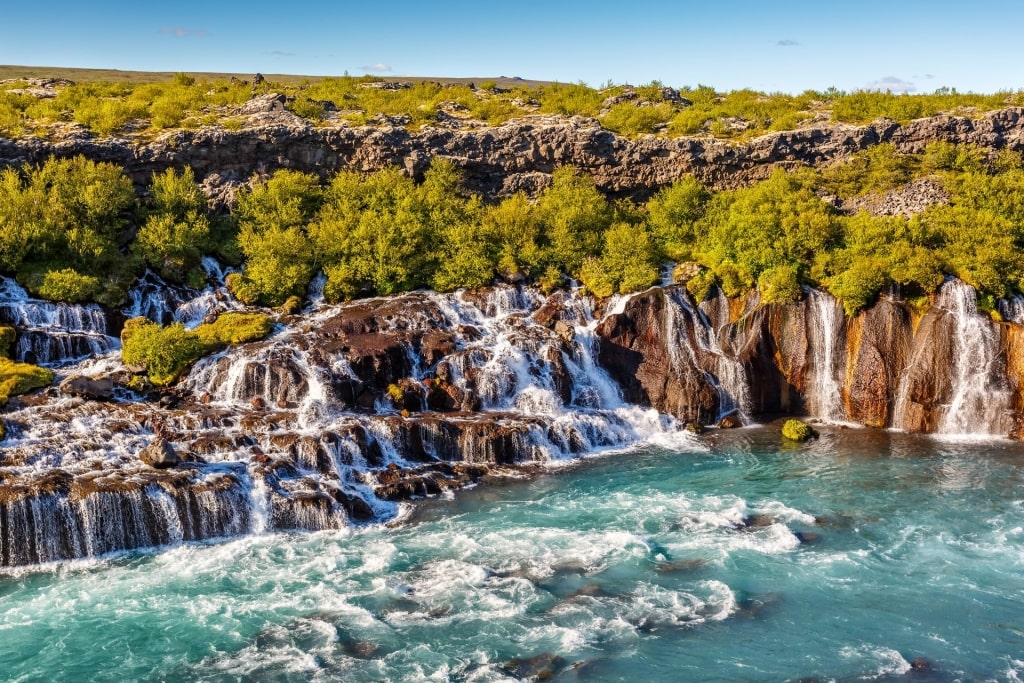
HraunfossarThe next-door neighbor to Barnafoss, this western Iceland waterfall is an easy trip from Reykjavik. Meaning “Lava Falls,” Hraunfossar’s streaming falls stem from the Hvita River and holds rich folklore history of being the home to trolls.
If you have some extra time, the village of Reykholt is close by as well as the longest cave in Iceland, Víðgelmir. It’s possible to venture into the lava cave to see the stalactites and stalagmites, another fascinating natural wonder in Iceland.
Grimsey Island
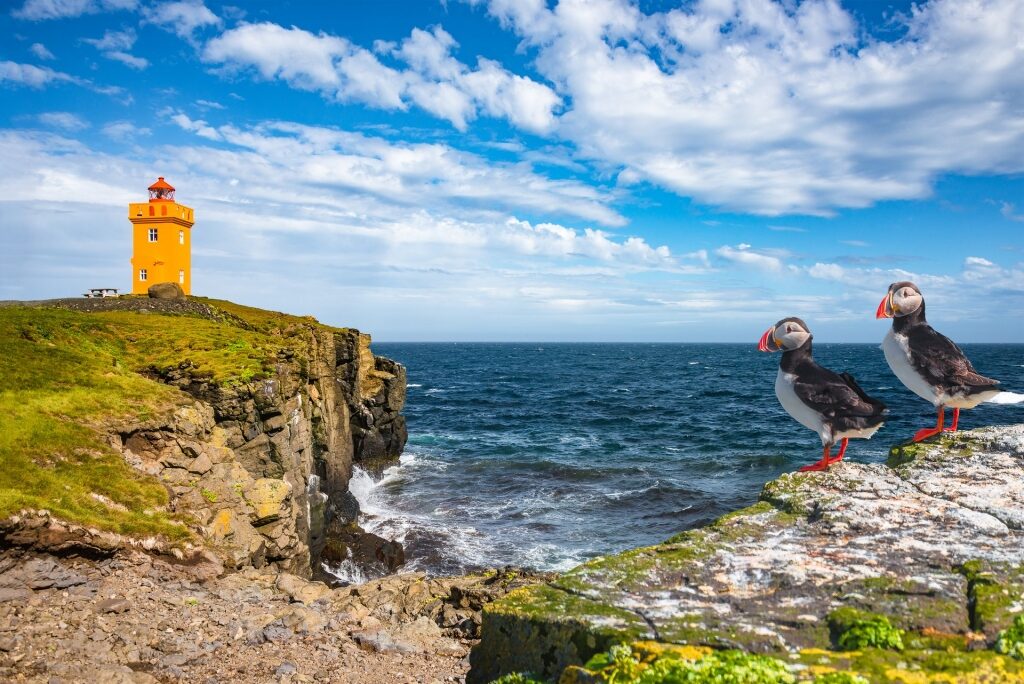
Grimsey Island
If seeing puffins in the wild is on your bucket list, then visiting Grimsey Island should be, too. This spot of land off of Iceland’s northern coast is close to the Arctic Circle and steeped in history. Visit the 800-year-old church, take in the picturesque harbor views, join a boat tour, and spend some time bird-watching.
Other than the majestic puffin, it’s possible to view other cliff-nesting birds like the murre, razorbill, and the black-legged kittiwake, especially from April until August.
If you’re looking to explore on foot, hiking trails skirt the coast and ramble through the village, offering expansive views. For a postcard-perfect sight, visit the bright yellow lighthouse that resides on the southern part of the island.
Geysir Hot Springs
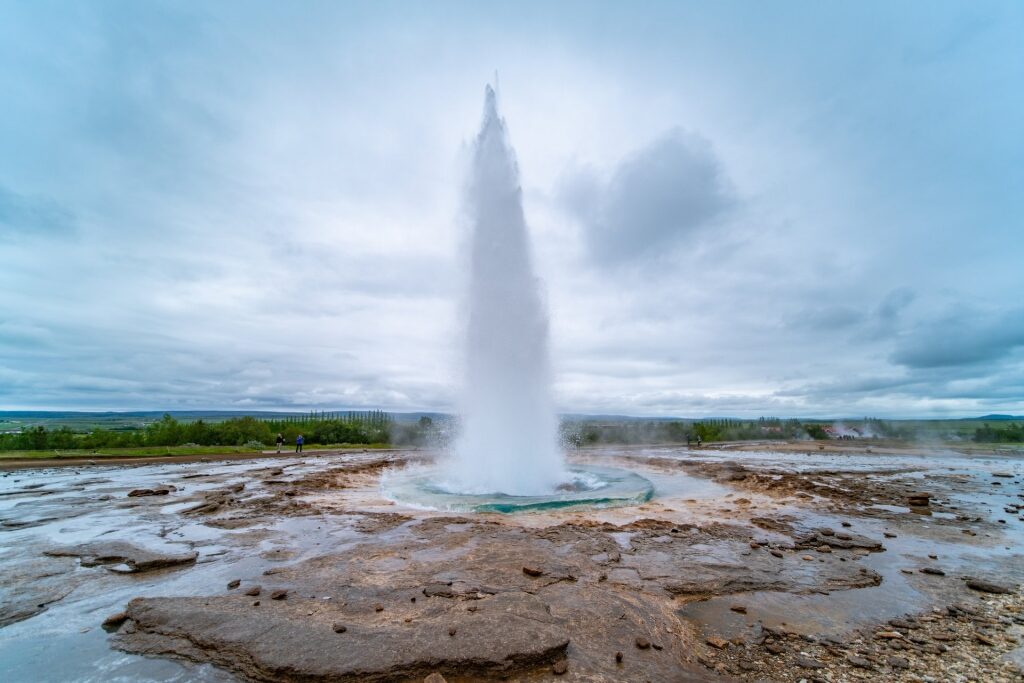
Geysir Hot Springs
Found along the well-traversed Golden Circle Route, Geysir is one of those Iceland natural wonders that you have to see for yourself. Situated in the geothermic Haukadalur Valley, it’s possible to visit on a day trip from Reykjavik in combination with the other attractions along the Golden Circle, Thingvellir National Park and Gullfoss.
Although Geysir is currently inactive and only erupts every few years or so, the area is also host to Strokkur, which shoots water up to 130 feet in the air about every 10 minutes. Water flowing from the Langjokull Glacier acts as the water source, while the lava rocks and magma work as the heat source to create boiling hot water for this epic show. Watch as the hot water bubbles at the surface signaling the upcoming eruption, providing an exciting Iceland nature experience.
Eyjafjallajokull Glacier
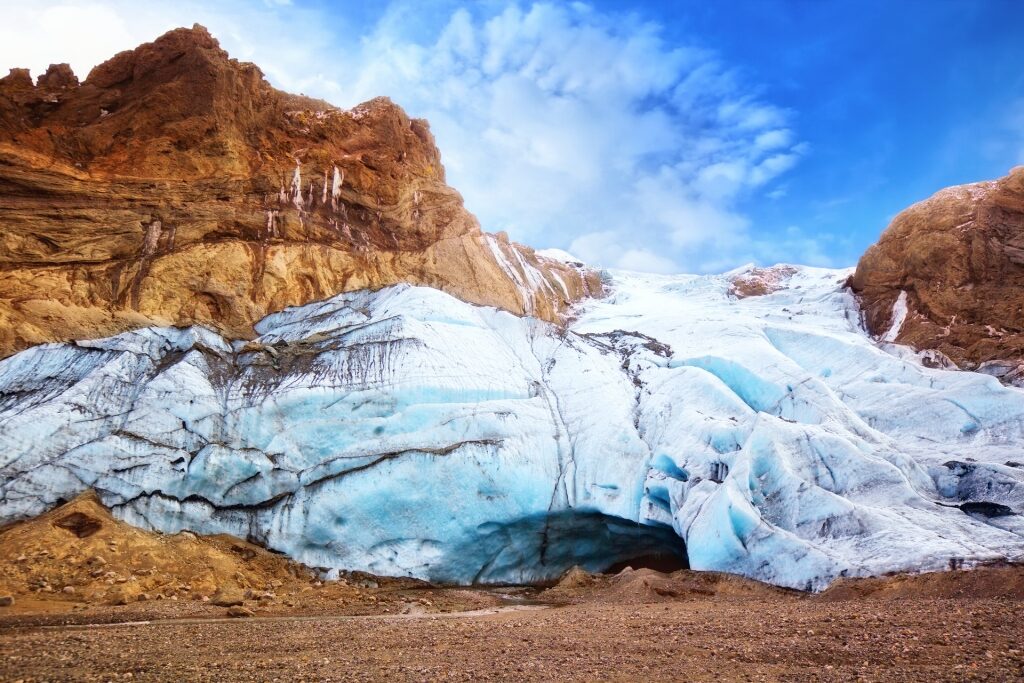
Eyjafjallajokull Glacier
This southern Icelandic natural marvel is an ice cap that covers 100 square kilometers with the caldera of a volcano underneath. Hike the glacier with a guide, snowmobile, embark on a super-Jeep tour, or tackle one of the longer treks like the Fimmvorduhals trail to get an up-close view of the icy splendor.
For a different perspective, a scenic flight over the Eyjafjallajokull Glacier and surrounding areas will have you gasping in awe at the volcanic and glacial scenery. Taking in the incredible landscape from above will create a whole new level of understanding the origin of Iceland’s nickname, “The Land of Fire and Ice.”
Lake Myvatn
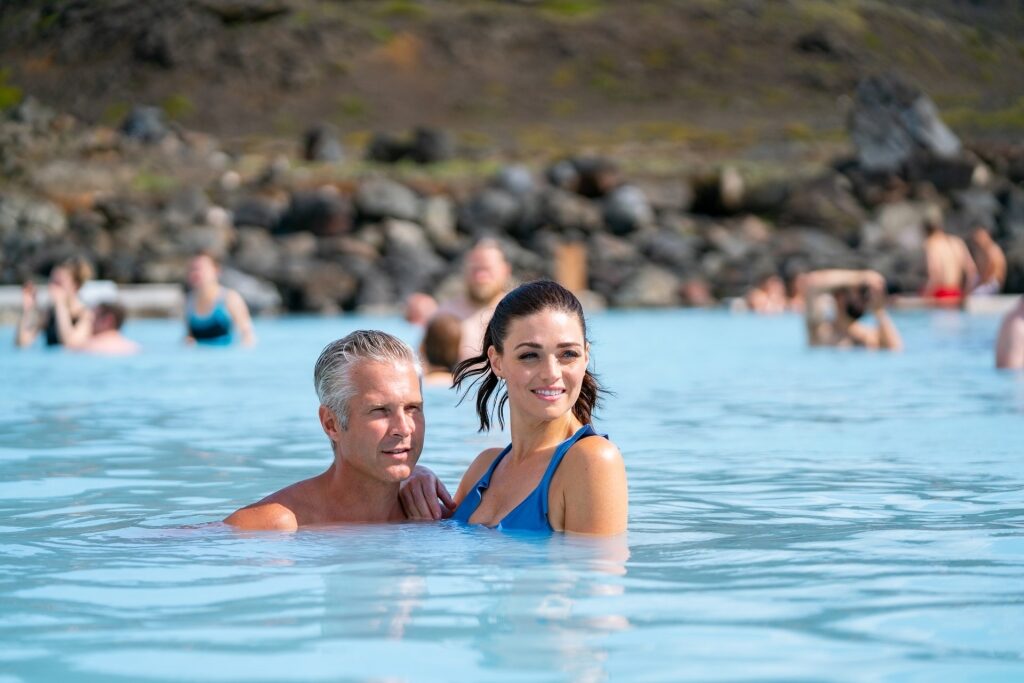
Lake Myvatn
Lake Myvatn is northern Iceland’s answer to the Blue Lagoon. Hot springs at the Myvatn Nature Baths make for an enjoyable experience in this region just an hour east of Akureyri. The inviting blue waters will warm you from the geothermal energy while you absorb the amazing panoramic views.
Known as one of the best lakes in Europe, Lake Myvatn is in an area rich with natural attractions and also part of the famous Diamond Circle, which consists of the village of Húsavík, the Ásbyrgi canyon, and Dettifoss, a powerful waterfall.
Plenty of other natural wonders worth checking out are in and around the Lake Myvatn area. Dimmuborgir Rock Formations can be explored by a network of walking trails. Hverfjall Crater Mountain is a popular hike for awe-inspiring views of the surrounding terrain.
On the southern end of the lake you’ll find Skutustadagigar, pseudocraters which were formed by lava gas explosions that occurred from molten hot lava streamed over water holes in the wetlands. It’s also a great area for birdwatching.
Godafoss
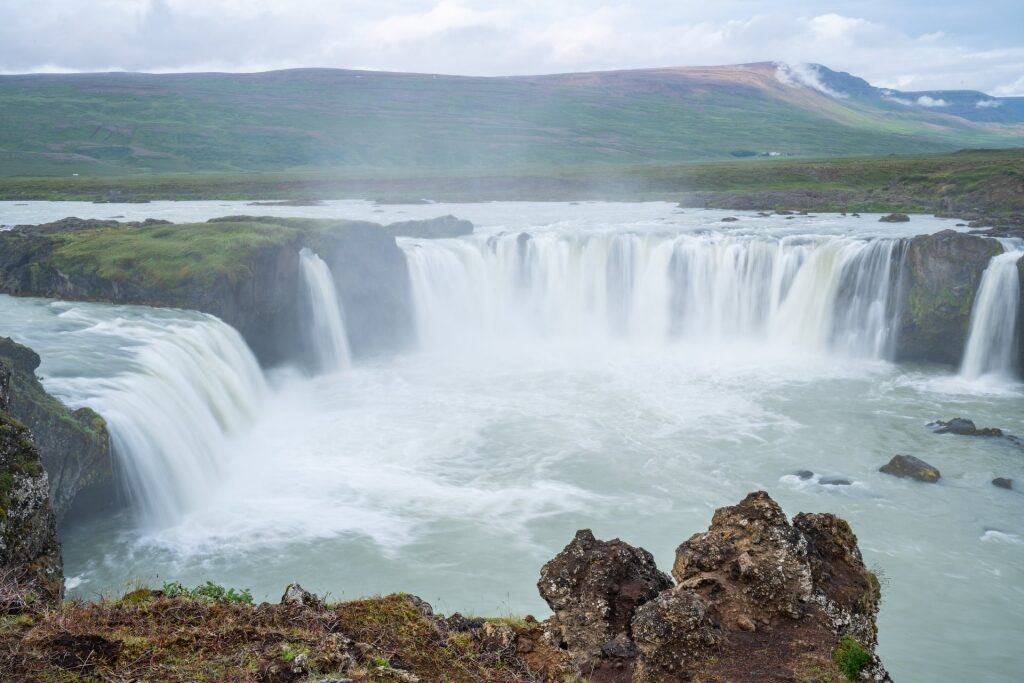
Godafoss
Yet another spectacular waterfall in Iceland’s astounding world of nature, this impressive site in the northern region of the country is part of the Diamond Circle and easily accessed from Ring Road (Route 1). It’s possible to visit either side of the falls via simple walking paths that don’t require much effort and viewing platforms where you can gaze upon the waterfall’s splendor.
Godafoss means “waterfall of the gods,” stemming either from old legends or the beauty of the wide set of falls—you decide.
Lake Graenavatn
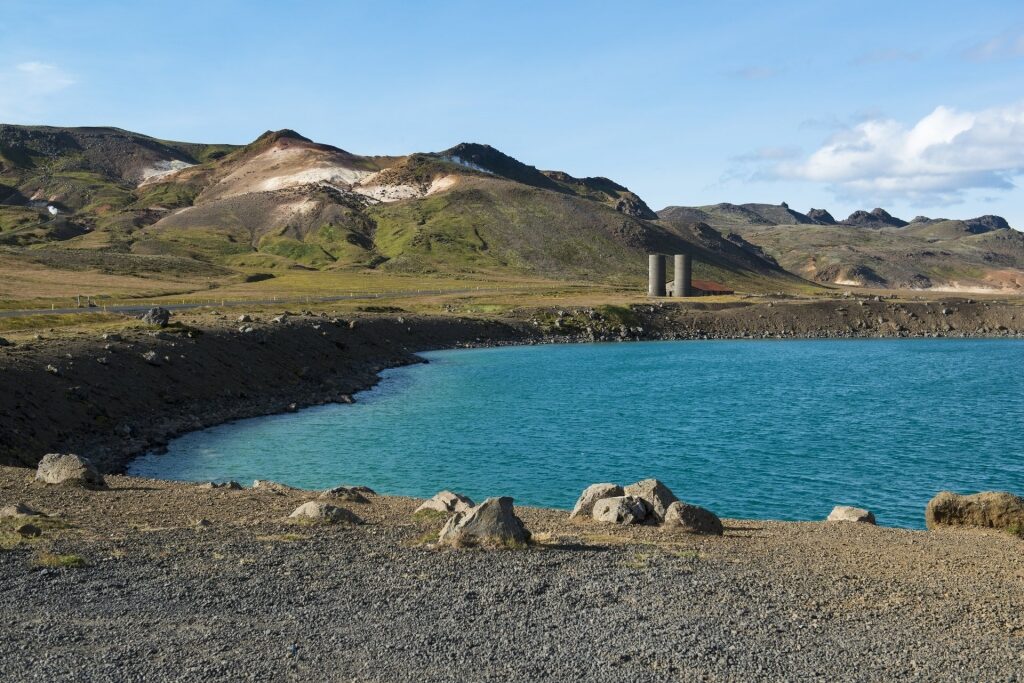
Lake Graenavatn
An electric green crater lake on the Reykjanes Peninsula will have you scrambling for your camera as you take the short walk around the small body of striking water. You’ll notice the color intensifies towards the middle and deeper portion (almost 150 feet) of the lake, adding to its mysterious properties. For a bird’s-eye view of this geological phenomenon and other crater lakes, consider taking a helicopter tour.
After your visit to the lake, stop by the nearby rock formation of Brimketill, a coastal lava rock pool formed by years of erosion. Brimketill carries its own ancient folklore stories like many of the other natural attractions in Iceland.
Bláfjöll Mountains
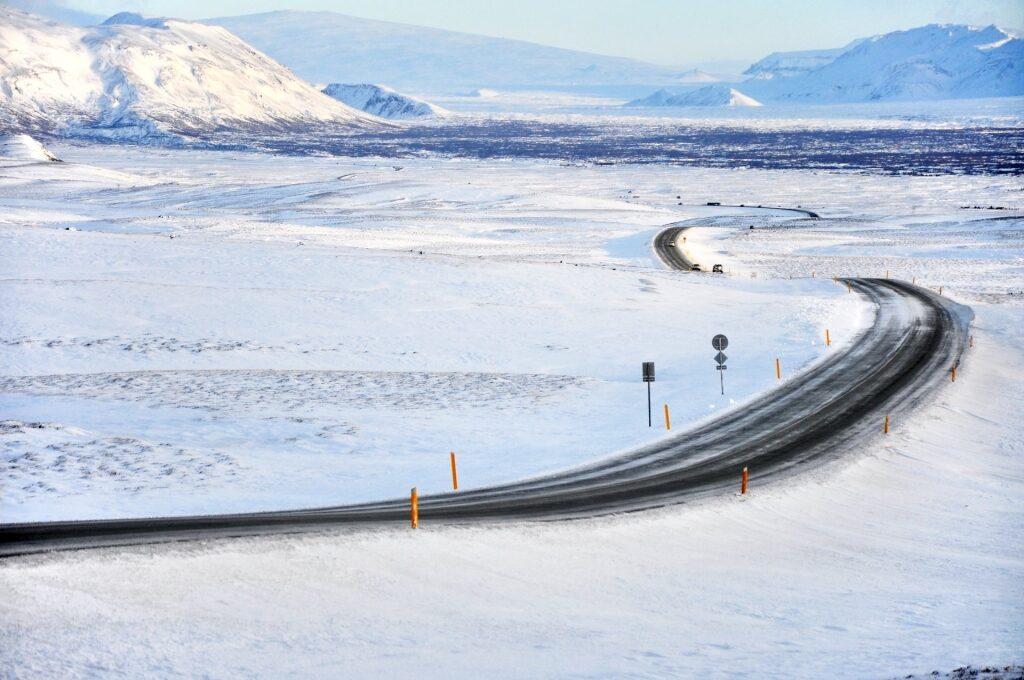
Bláfjöll Mountains
Otherwise known as the ‘Blue Mountains,’ this southwestern range is a popular spot for cave exploring, skiing, and hiking in Iceland, all within close proximity to Reykjavik. One of the well-known lava caves, Leiðarendi, is an interesting natural tunnel formed from two volcanic eruptions. Marvel at the contrasting moss growing amongst the black rock landscape and pinch yourself when you realize you’re inside a volcano!
Another option for enjoying the mountain backdrop is to embark on a horseback riding adventure with the gorgeous Icelandic horses. Trotting along the Icelandic countryside with the Bláfjöll Mountain backdrop will be a highlight of your trip.
Krafla Lava Fields
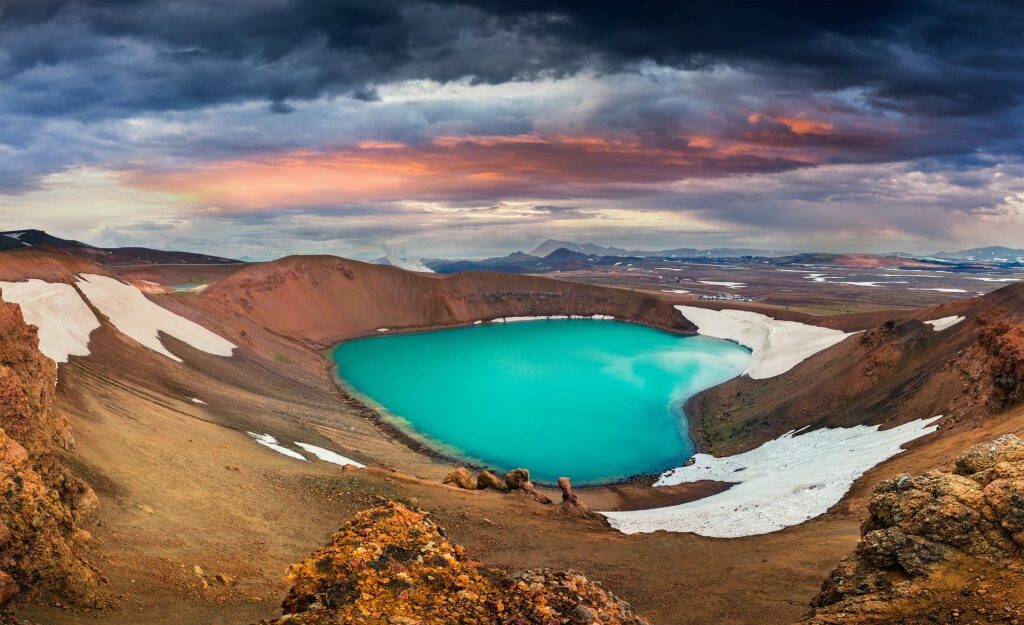
Krafla Lava Fields
Near Lake Myvatn in the northern region of Iceland, the Krafla caldera is one of the country’s wonders of nature. Feel like you’re an explorer on the moon as you walk one of the trails in the midst of craters, cracked earth landscapes, burbling mud pockets, and steam rising all around.
Making your way along the rim of the crater, you’ll be rewarded with a view of the Viti Crater lake showing off its turquoise-colored water. Visit the Krafla Power Station if you’re interested in learning about geothermal energy in Iceland and how they use it to make the country green and sustainable.
Helgufoss
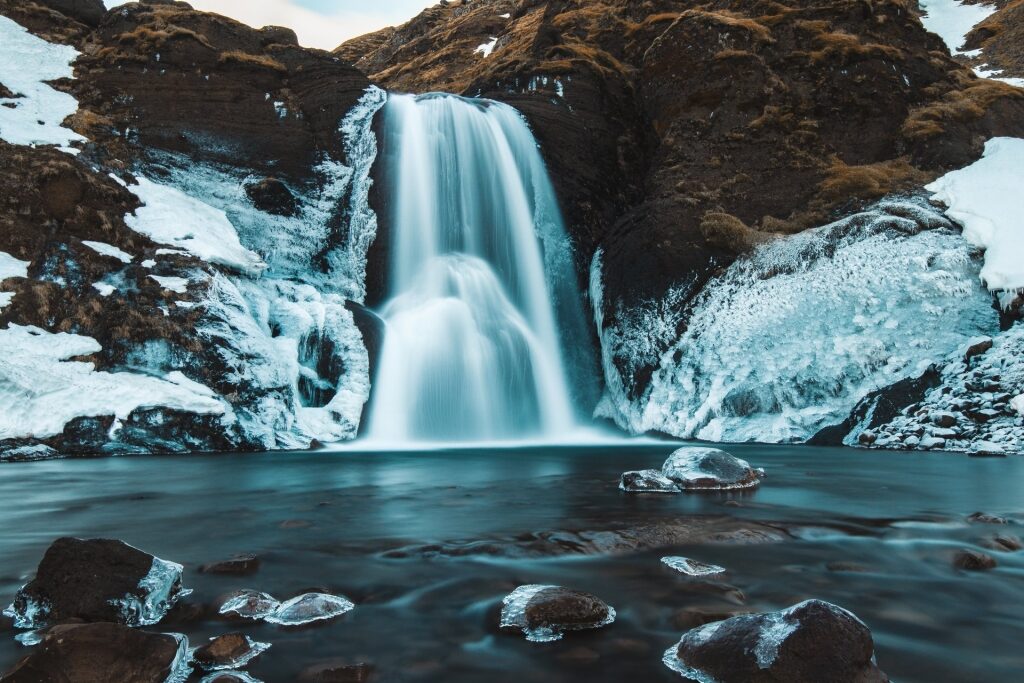
Helgufoss
Tucked in the Mosfellsdalur Valley about a half an hour outside the capital city of Reykjavik, Helgufoss is a relatively unknown but tranquil waterfall. Discover this gem along the Laxness Trail (Poet’s Path) named after the local Nobel Prize-winning writer, Haldor Laxness. The path winds along the Kaldá River for a peaceful walk with little effort to the 39 feet tall cascade—you might even enjoy it all to yourself.
Mount Helgafell Volcano
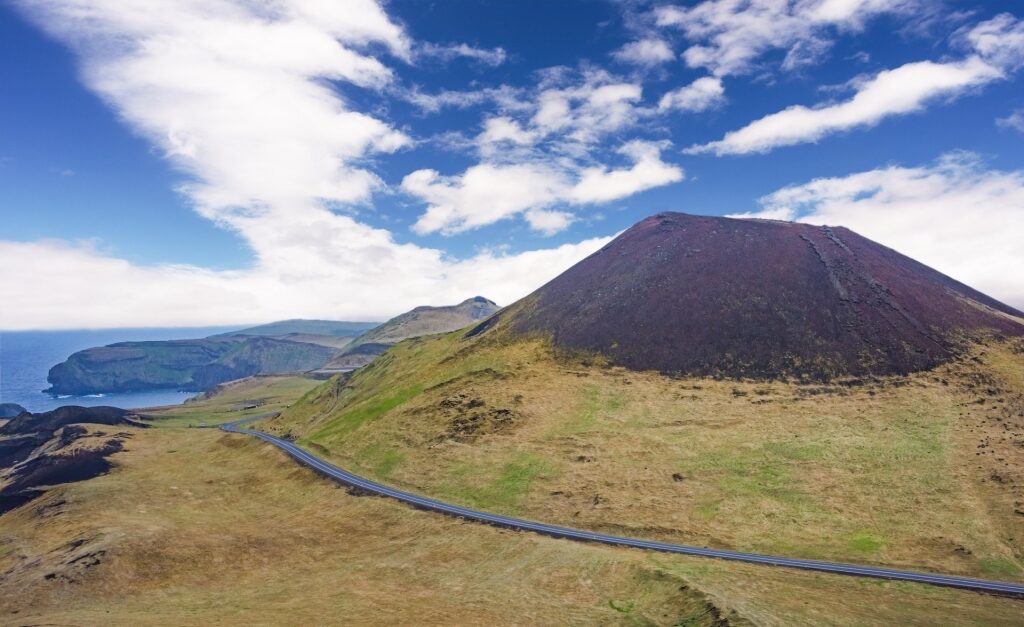
Mount Helgafell Volcano
North of Reykjavik on the amazingly beautiful Snæfellsnes Peninsula, a historical and sacred hill with a background rooted in folklore awaits. Legend has it that if you hike the mountain as a first-timer and don’t speak a word or look back along the way, then you’ll get three wishes granted.
The walk to the top takes about 15 minutes, where you’ll get views of Breiðafjörður Bay and its islands, see the village of Stykkishólmur, and encounter the ruins of a prayer chapel.
Langjokull Glacier
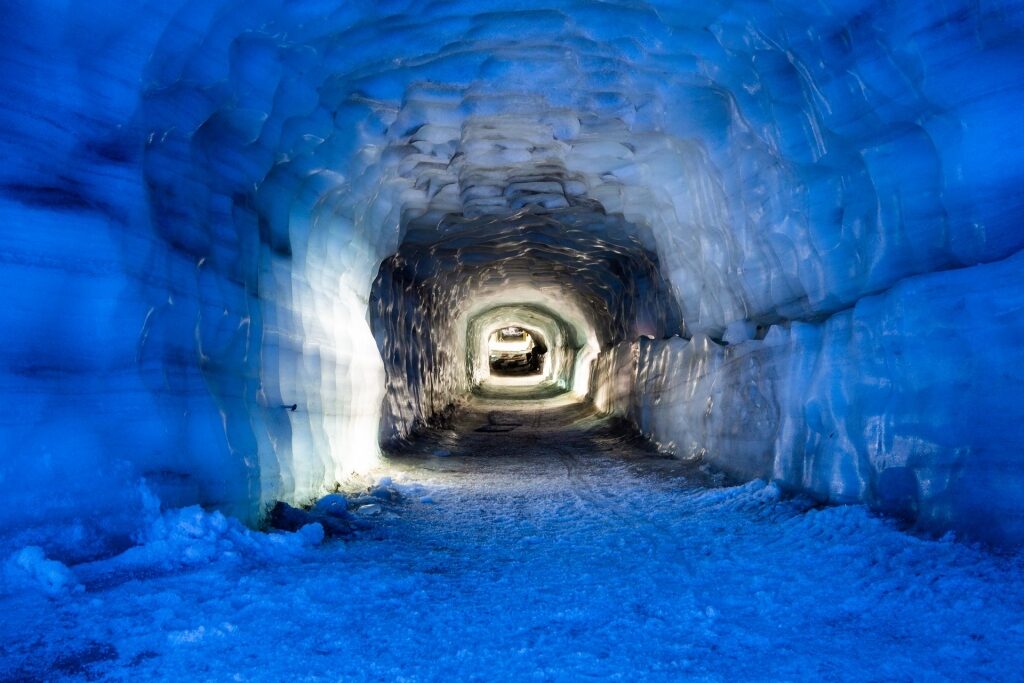
Langjokull Glacier
Deemed the “long glacier,” Lanjokull in the highlands region to the east of Reykjavik is a popular site for exploring one of Iceland’s most fantastic natural wonders. At 31 miles long and 12 miles wide at some points, there is much to explore. To best experience the glacier, venture inside via a manmade tunnel or explore the ice caves on snowmobiles or Super Jeeps.
Seljalandsfoss
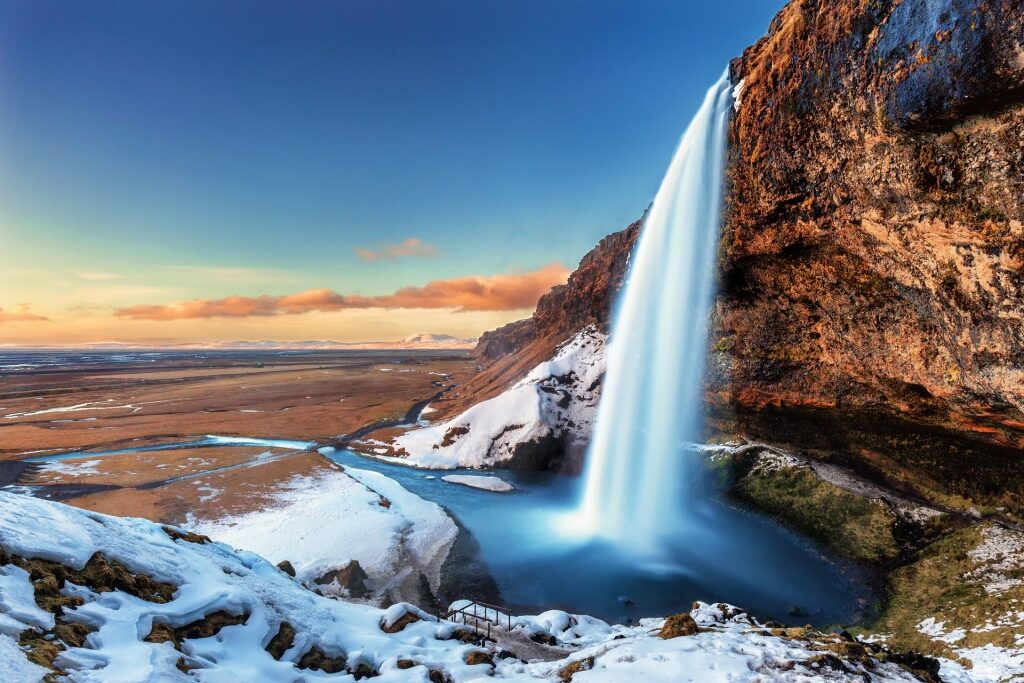
Seljalandsfoss
Seljalandsfoss, one of Iceland’s most famous waterfalls, is a must-see. Located on the south coast about an hour and a half from Reykjavik, it’s easily reached via the Ring Road near the village of Hella. Other than being something out of a dream, this waterfall is unique in that you can venture behind it. Make sure to bring a waterproof jacket if you want to get close—you will get splashed!
Read: What to Pack for Iceland
This almost 200-foot cascade drop is glacier fed by pristine water from the nearby Eyjafjallajökull Glacier. Travel down the path just a little further to see another impressive waterfall. Gljufrabui is in a cave, so just when you thought it couldn’t get any more amazing, Iceland nature raises the bar again.
Ready to experience some of Iceland’s top natural attractions? On a cruise to Iceland with Celebrity Cruises, explore the southern and northern regions of the country through the unforgettable port cities of Reykjavik and Akureyri.
Spend your days enjoying Icelandic landscapes and culture and your evenings indulging in world-class dining, premium accommodations, and terrific entertainment on board. Browse our Iceland cruise itineraries and book your next extraordinary adventure today.
